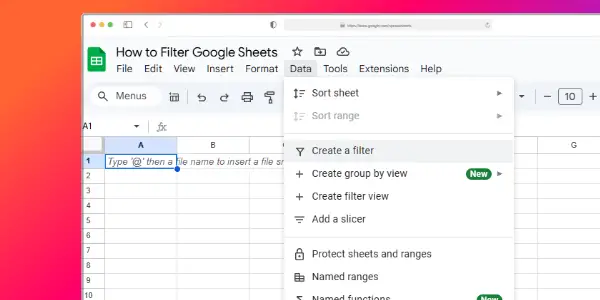Program management is a complex process that requires careful planning and execution. Key Performance Indicators (KPIs) are an important tool for measuring the success of a program and ensuring that it meets its objectives.
Key Performance Indicators (KPIs) for Program Management measure processes, progress and outcomes on a project. Examples include budget tracking, customer satisfaction, cost of work, time to market, throughput rates, resource utilization, quality and quantity of deliverables.
They provide insight into how well the program is performing, allowing managers to identify areas for improvement and track progress over time. In this article, we will discuss some of the most common KPIs used in program management.
Definition of KPIs
Key Performance Indicators (KPIs) are metrics used to measure the overall performance of a program. KPIs help to provide feedback on how well a program is meeting its objectives and can be used as a benchmark for future performance goals.
In this article, we’ll look at the definition of KPIs, how they are used, and some examples of common KPIs used in program management:
What is a KPI?
A KPI, or Key Performance Indicator, is a measurable value used to track and assess progress towards strategic business objectives. A KPI can be anything that can be tracked through both qualitative and quantitative data, such as customer acquisition rate, average order size, or monthly page views.
KPIs are used to help make the most effective decisions when managing programs by providing near real-time feedback on progress.
When selecting KPIs it’s important to focus on outcomes or results rather than activities. For example, if a program goal is to increase sales of a particular product then customer satisfaction rate would be relevant but the number of customer service training hours an individual has clocked might not be meaningful.
KPIs can also be broken down into lagging indicators, which provide feedback on performance in the past and leading indicators which provide insights into future performance based on course corrections implemented in the present. For example customer churn rate over the last quarter would be considered a lagging indicator while customer retention rate early in the next quarter could serve as a useful leading indicator for predicting future trends.
Knowing which indicators are most important for tracking program performance will give teams valuable insight into what areas need improvement and what strategies have been working well for achieving desired goals or objectives. Ultimately KPIs will help ensure that program results align with desired goals and can greatly aid decision-making within organizations.
Types of KPIs
Key Performance Indicators (KPIs) are data-driven metrics that help you measure how effective your program is. They allow you to evaluate whether or not your program is making a positive impact and take steps to improve it. When setting KPI goals, consider your desired outcomes and the available data that can be used to track progress towards them.
KPIs can be divided into four types: indicators of performance, output measures, process measures, and outcome measures.
- Performance indicators measure how well a program is executing activities such as reaching its goals and meeting objectives. Examples include cost per service delivery or customer satisfaction scores.
- Output measures track the number of services delivered by a program over a period of time including the number of consumers served or information disseminated.
- Process measures focus on tracking the quality of services delivered by a program including standards set for service delivery as well as client safety and training standards maintained by staff members.
- Outcome measures evaluate changes in a target population resulting from exposure to programs including increased knowledge or improved attitudes towards related topics.
KPIs for Program Management
Program management is all about measuring progress and success. Key Performance Indicators (KPIs) are an important tool for program managers to measure performance, assess progress and make data-driven decisions. In this article, we will discuss the different KPIs that are used in program management and how they can be used to measure success.
Program Quality KPI
Program Quality KPI, otherwise known as program quality key performance indicators, are metrics used to measure and improve the success of a program’s objectives. It helps organizations measure the effectiveness of a set of interventions that work together to achieve desired outcomes. These KPIs measure customer satisfaction in relation to service delivery, resulting in improved customer loyalty. They also monitor the success rate and provide data on how users interact with a given product or service.
Program Quality KPI allows organizations to evaluate programs at different stages, from early intervention through product introduction and evaluation.
Program quality KPIs should provide feedback regarding any improvements or modifications needed on products or services as well as feedback regarding level of staff involvement, customer satisfaction and overall success rate. The KPIs should also be designed such that they are measurable at every stage of the product lifecycle including conception, design, development and operations.
Examples of Program Quality KPI include:
- Customer satisfaction scores (CSAT)
- Customer effort scores (CES)
- Number of reported incidents/bug fixes per release cycle
- Average time for bug resolution by platform/product type (TIER 1-6)
- Post-usage survey ratings (i.e., NPS)
- Net promoter score (NPS)
These metrics allow organizations to gain insights into customer experience with an existing product or service while taking into account any external factors such as changes in user interface design or new feature introduction that could affect this experience in a positive or negative way. Additionally, these metrics better enable teams to assess launch efforts within their operational environment by assessing overall program objectives effectiveness at each stage within the cycle.
Program Cost KPI
Program cost KPI (key performance indicator) helps management measure the success of a particular program in relation to its established budget. As a result, this KPI reflects the controllable cost of activities related to the management of programs and services. Programs can consist of multiple activities, such as identifying customer needs, developing and launching projects and campaigns, improving customer satisfaction and complaint resolution, among others. By tracking program costs accurately, management is able to take the right actions needed to continually improve their performance and ensure that it is both cost efficient and effective.
Program cost KPI measures the contribution margin ratio which compares total revenue generated by a program with its related expenses. This metric is useful in determining efficiency as it allows managers to identify waste areas in their program while maintaining adequate control over its budget. Additionally, this KPI can be used as a benchmarking tool to compare how different programs fare against each other in terms of profitability or efficiency.
In addition to tracking total expense ratio, another important measure for assessing program costs are variable costs per unit produced or sold which measure how expensive production processes are for each unit produced or sold. This metric helps management identify specific areas where there may be efficiency issues or where resources may need to be reallocated in order to maximize return on investment from a given program or project. Lastly when it comes to analyzing program costs managers should pay close attention indirect costs such as employee training and development expenses which play an important role when it comes productivity but are often overlooked during budget planning processes.
Program Schedule KPI
Program schedule KPI is a crucial performance indicator which monitors the overall program timeline and assists with the implementation of tactical program milestones. It is important to assess whether a program is on track and progressing towards its completion dates. The Program schedule KPI reflects the length of time the program has been running and allows managers to identify discrepancies in timeframes, delays in execution, or instances of task slippage.
By tracking key performance indicators, like Program schedule KPI, project managers gain a better understanding of the work effort being dedicated to their program and can easily identify areas where extra resources are required. Additionally, this type of KPI helps program teams assess progress along their timeline for each phase in order to complete tasks on time and reach their final goal.
The key features of a Program Schedule KPI typically include:
- Start date
- Completion date
- Number of tasks accomplished per phase
- Percentage of tasks complete
By using this information as an assessment tool for progress tracking purposes, project teams will make more effective decisions when evaluating workflows and planning for future success.
Program Risk KPI
A Program Risk KPI is an important measure to evaluate how well the program is managing its risks. It helps determine how successful the program has been in addressing and mitigating the potential risks associated with it. The program risk KPI can be used to assess and track the effectiveness of a program’s risk-management strategy. This helps in identifying areas for improvement, allowing for timely corrective actions.
Program Risk KPIs provide a clear identification of what key performance indicators need to be targeted in order to maximize program value and reduce risk exposure. Such indicators may include:
- Mitigation plan effectiveness
- Frequency of issue resolution
- Number of changes implemented
- Number of incidents handled
A combination approach should be taken; while staff need to understand their individual KPIs, they should also work together across departments to optimize outcomes at both team and organizational level.
Ultimately, KPIs that are developed specifically for program management help organizations understand the overall scope of their project/program activities, ensuring they are making thoughtful decisions that create long-term value while managing risk exposure. By analyzing ongoing operations through these metrics leaders can identify where resources should be allocated or opportunities sent up for innovative solutions that can help streamline operations and cut costs while increasing efficiency.
Program Benefits KPI
Program Benefits KPI, or Key Performance Indicators, are used to track and measure the performance of programs in terms of their ability to provide a return on investment (ROI). The program’s success is ultimately judge by its success in achieving the program goals, which can vary depending on the program and the organization’s objectives. Program Benefits KPI can help guide an organization in how to best allocate resources and understand how a program is progressing.
The two main categories of Program Benefits KPIs are quantitative benefits and qualitative benefits. Quantitative benefit KPIs track direct financial measures such as cost savings, revenue increases and profitability. Qualitative benefit KPIs assess indirect benefits such as customer loyalty, employee engagement and operational efficiencies.
Quantitative benefit KPIs include:
- Cost reduction
- Return on investment (ROI)
- Revenue growth
- Profitability
Qualitative benefit KPIs include:
- Customer satisfaction or loyalty
- Employee productivity or engagement
- Process effectiveness/production efficiencies/time savings
Best Practices for Setting KPIs
Setting KPIs (key performance indicators) is an important part of successful program management. KPIs can help you track and measure the success of projects and initiatives in your organization. However, it is important to ensure that you are setting the right KPIs for your program.
In this article, we’ll look at some best practices for setting KPIs for program management:
Set Measurable Targets
Establishing Key Performance Indicators (KPIs) for program management allows you to measure program performance and make informed decisions. When setting measurable targets for your program, identify which objectives are of highest importance and what you need to accomplish in order to achieve those goals.
To determine the best metrics to track, ask yourself the following questions:
- What constitutes success?
- How will success be measured?
- What processes or procedures need to be improved?
- Which deliverables must be achieved on time and under budget?
Once you’ve answered these questions, develop clear, quantifiable targets that can help assess the performance of your program. When selecting target metrics, it is important to consider factors such as scope, cost, schedule, and quality of the deliverables. Additional measures such as customer satisfaction and return on investment may also be taken into account when setting KPIs.
When defining objectives for each KPI, make sure they are specific enough that the entire team understands what is expected from them. Additionally, periodically assess the KPIs you’ve set and adjust or add new ones if needed; this will help ensure that your team remains focused on goal achievement.
Track and Monitor Progress
A key performance indicator (KPI), also known as a performance measure, can be defined as an expression of how well an organization is meeting its goals and objectives. By tracking and monitoring progress on KPIs, it’s possible to more accurately assess whether or not a program is meeting its goals.
When establishing a set of KPIs for program management, it’s important to determine which measures are most important for your organization’s success. A few potential areas to measure include: customer satisfaction, budget management, cost-benefit analysis, resource utilization, program deliverables and timeline completion. Once the desired KPIs have been established, they should be tracked regularly and reported on in order to measure program performance over time.
In general, measuring performance starts with tracking the data associated with the relevant KPIs. Referring back to the previously listed examples of potential areas to measure in program management; this could mean tracking how many customers are satisfied with their product or service or surveying resources available during the course of a project to assess if they adequately met their needs.
On top of recording historical data related to these metrics it can be beneficial to track changes over time by setting objectives such as increases or decreases in customer satisfaction ratings over particular periods of time by comparing current measurements against benchmarks set at the beginning stage of programming implementation.
This data can then be visualized through graphs or other analytical tools in order to quickly compare past results against newly generated ones from ongoing programs being managed within an organization.
Tracking and monitoring progress is essential for successful implementation of any program within an organization and properly utilizing key performance indicators (KPIs) can go a long way towards ensuring attainment of stated objectives within allotted timeframes and budgets.
Review and Adjust KPIs
KPIs, or Key Performance Indicators, are an excellent way to track the progress of a program and determine if performance goals are being met. As KPIs are highly customizable, it is important to review them regularly and adjust as needed. This can help identify potential issues that may arise as the program progresses, allowing teams to address them before they become significant problems.
At a minimum, KPIs should be reviewed on an annual basis; however, depending on the complexity of the program or severity of the issue being addressed, more frequent reviews may be beneficial.
Additionally, it’s important for your core team members to review and adjust KPIs together in order to ensure that all stakeholders have a shared understanding of what success looks like and when adjustments need to be made.
For successful KPI reviews and setting adjustments, consider the following best practices:
- Plan frequent meetings with key stakeholders in which KPI performance is discussed in detail.
- Utilize data-driven insights (e.g., trends over time) when assessing results against targets and considering potential adjustments.
- Develop collaborative implementation plans for new or updated KPI goals which includes assigning responsibilities and setting timeline expectations.
- Utilize existing KPIs as much as possible during program assessments; this will help you gain insight into any changes that need to be made while also allowing you evaluate past decisions over time.
Conclusion
When used together, KPIs provide an indication of the health of a program, enabling program managers to keep track of progress and identify areas where improvement is necessary.
However, it’s important to be wary of too much reliance on data. People are accountable for achieving the key outcomes of a program, so it’s essential to recognize their contributions as well as analyze trends in program performance.
In summary, the appropriate selection of KPIs will give an understanding of whether a program is successful or not.
What metrics should be used for your specific program will depend on its goals and objectives, as well as how it fits into the wider organizational strategic framework. It’s important to develop tangible indicators with clear targets that can be tracked against actual performance so that you can provide clear reasons for any discrepancies or successes that arise from your actions.
Ultimately, choosing which KPIs to use for your specific program depends on careful evaluation and strategic decision-making.
Frequently Asked Questions
What are KPIs for Program Management?
Key Performance Indicators (KPIs) for Program Management are metrics used to measure how well a program is achieving its goals. Common KPIs might include program budget, timeline, customer satisfaction, and progress against milestones.
How do you track KPIs for Program Management?
KPIs for Program Management can be tracked through various systems, such as project management software, customer relationship management (CRM) systems, or internal databases.
How often should KPIs for Program Management be monitored?
KPIs for Program Management should be monitored regularly, typically on a weekly or monthly basis.





